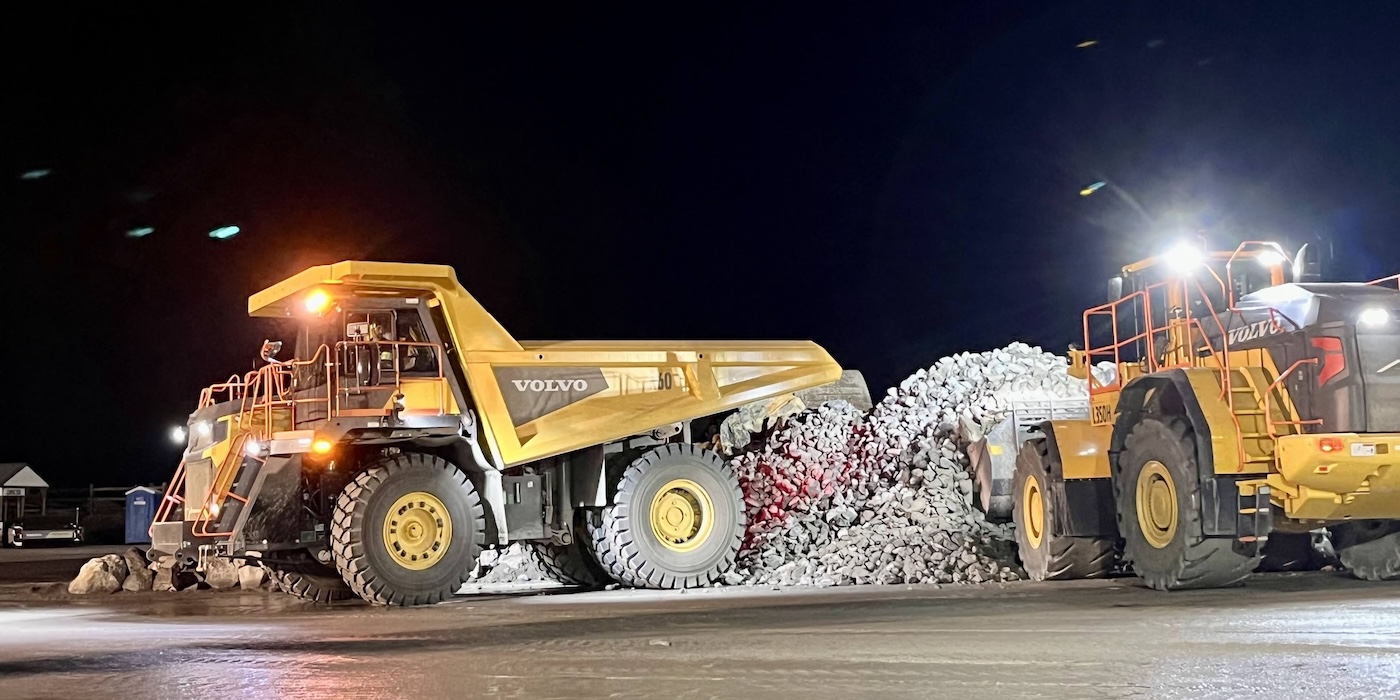
This week, Volvo Group held its once-every-three-years “Volvo Days” event in Shippensburg, PA for the first time since the pandemic, showing off tons (literally!) of new equipment, new trucks, and new concepts – including a couple of “world’s first” debuts.
What is Volvo Days? That might require a bit of background …
The heavy equipment world operates on something of a three-year cycle. ConExpo, the industry’s biggest trade show, happens every three years. That sets the tone, with companies showing off all their hottest concepts and forward-thinking new projects. That’s year 1. Year 2 is typically when shows like Volvo Days typically take place, with manufacturers rolling out the production versions of the concepts they showed at ConExpo and inviting a mix of dealers, end-users, and journalists in to try out some of what got showed at ConExpo. Year 3 is more insular, with the manufacturers bringing in salespeople to get them trained on new products and prepare them for how to talk about what the company is planning to show at next year’s ConExpo.
ConExpo was last year, so this year we get Volvo Days – for the first time since 2018, in fact, since the 2021 event was canceled due to COVID. That makes this the first Volvo Days in six years … and expectations were high.
The kickoff
Volvo kicked off the week’s events with a drone display highlighting the company’s construction equipment history – appropriate, given that the event was held at Volvo CE’s Pennsylvania engineering and production campus. The drone show was followed by a genuinely impressive, highly choreographed equipment ballet that featured new electric equipment shown for the first time in North America, as well as the new-for-2025 Volvo VNL and Mack MD Electric trucks doing some heavy lifting and hauling.
The show lasted well over thirty minutes, and it was impossible for me to keep track of everything that was happening, but you can get a sense of it in the video (above).
Compact electric equipment


Volvo had its new, in-production L20/120 Electric wheel loader and ECR25 Electric excavator front and center in its reception center, along with information highlighting their competitive advantages in the compact equipment space.
The best thing about Volvo Days, however, isn’t that they have interesting vehicles on display – it’s the fact that nearly every one of those interesting vehicles is available to experience first hand … including the 30-ton EC230 Electric excavator.

All the electric excavators (even the mini) were incredibly smooth and quiet, with noticeably fewer vibrations than their diesel counterparts … which we also got to play with.
That said, I’m not a “real” equipment operator, which means my seat of the pants impressions are probably worth less than those of the people who use these things every day. That’s why I was glad to have Mike Switzer, my co-host on The Heavy Equipment Podcast, along for the ride.
“It’s really impressive, and the articulation on the Steelwrist is incredible,” Mike told me, after hopping out of the demo EC230. “I’ve seen it before, obviously, but I’ve never had a chance to use it. I think every municipality needs to take a look at that.”
Electric compaction

Over on the compaction side, Volvo had its DD25 Electric vibrating drum compactor on display – where the all-electric tandem roller was joined by two all-new siblings being shown off for the first time ever: a pre-production DD15 Electric “mini” compactor prototype seemingly designed for sidewalks and driveways, and the TC13 Electric trench compactor.
The TC13 Electric is designed as a walk-behind unit that uses its heavy batteries to provide the compaction mass – but those heavy batteries won’t get depleted in the hour or so of operation that most trench compactors see on a busy day. To keep the little TC13 useful throughout the day, Volvo gave it a pair of 110 and 220V outlets.

Specs weren’t released, but Volvo’s compaction brand manager claimed those outlets were more than capable of keeping the rest of the job site’s battery-operated tools running all day long, and even packed enough juice (in a pinch) to power a portable office, table saw, or drill press.
“Did you see his face when I asked if it could run an arc welder?” asked Mike, smiling. “He said, ‘It’s not something we’d advise,’ but you could tell he liked that question.”
Yeah, he did!
Electrek’s Take

Somewhere around the twenty minute mark of the “equipment ballet” show, something broke inside my brain. I think it was the sparks flying off the bucket when the L20 Electric scooped up a few thousand pounds of gravel and sand at full speed, scraping its bucket along the ground. Maybe it was the hydrogen-powered articulated loader, or the open bar.
Regardless, one thing that was made very clear at Volvo Days ’24 is that, while other companies are still developing the initial entries into the electric commercial vehicle space, Volvo has not just a full line of products – but an expanding line of products, with the company entering new spaces specifically because of the unique advantages electric offers.
As Volvo’s North American President, Scott Young, explains, the future is electric, and Volvo’s vision for the future has the company firmly in the leadership position … but more on that in part 2.
ORIGINAL CONTENT FROM ELECTREK.
FTC: We use income earning auto affiliate links. More.


